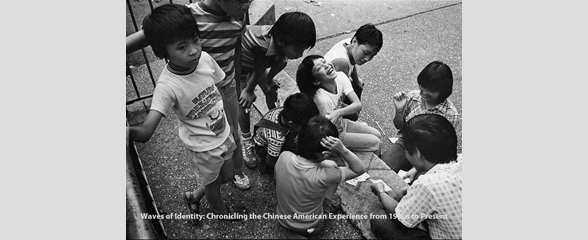Chinese American women;Chinese American families;Chinatown (New York, N.Y.);Women teachers, Xinhui (Guangdong Sheng, China)

1983.004.002 Oral History Interview with Cora May Chin
Growing up, Cora May Chin (née Chu, born 1927) lived with her parents and two sisters at 47 Mott Street, above the apartments of her paternal grandparents and large extended family. Her father, Farn B. Chu, was a doctor with a medical practice on the third floor of the same building, and her grandfather, Chu Fook (Ng Yee Foke), was a proprietor of Mon Hing Co., a wholesale restaurant supply and grocery store at 19 Pell Street. Her mother, Mary York Tsui, taught at Chinese school, which Cora attended after school six days a week for three years during junior high. Cora initially attended the neighborhood’s P.S. 23 from kindergarten through first grade, however, she and her sisters subsequently received a scholarship to Birch Wathen, a K-12 private school in the Upper West Side. At the University of Michigan, Cora majored in Anthropology, and to help support herself, spent every summer working for New York Hospital as a clinic aide. After graduation, she landed a job as a medical technician at Sperry’s. In 1953, she married Stephen Yook Chin, with whom she had three children. After her children were born, she decided to go back to get her master’s in education at Hofstra University and spent the next eighteen years teaching first to third grades at Hewlett Elementary School in Long Island, New York.
In this oral history, Cora begins by recounting the immigration story of her family, including the first family members to come to the United States. Other topics of the oral history include her education, what Chinatown was like when she was growing up in the 1940s, social life, dating culture, and the groups that she and/or her peer groups were a part of, such as the Christian Students Association (CCSA) and the Ging Hawk Club. She also discusses her experiences later in life, including how she met her husband, moving to the suburbs of Long Island, her experience or lack thereof with racial prejudice, her involvement with the Long Island Chinese Circle and US-China Peoples Friendship Association, and her visit to China in 1976. She additionally reflects on her fluency level and use of English and Chinese, her children’s identification as more Western than Chinese and their choice of caucasian spouses, as well as her own feelings towards dating caucasian men and living in a predominantly caucasian community among caucasian friends.